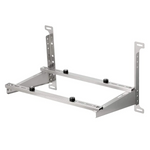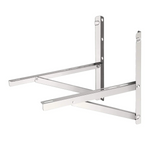
When you keep your doors and windows closed for long periods while using air conditioning, it’s easy to forget one essential thing: ventilation. Without it, indoor air becomes stale, humidity levels fluctuate, and the room can feel stuffy and uncomfortable. This is where Energy Recovery Ventilators (ERVs) come in—a smart, bidirectional system that continuously brings fresh outdoor air inside while simultaneously expelling stale indoor air.
Improving Indoor Air Quality with an ERV System
While mini-split air conditioners excel at cooling, they often fall short when it comes to ventilation. Introducing fresh outdoor air isn’t just about comfort—it’s about health. Outdoor air is rich in oxygen, helps dilute indoor pollutants, and reduces stuffiness. Without intentional ventilation, even the best AC systems can’t fully refresh your indoor environment.
ERVs solve this problem effortlessly. They provide continuous fresh air exchange without the need to open windows—making them an ideal companion to any mini-split AC system.
How an ERV System Enhances Your Mini-Split HVAC System
1. Air Purification
The ERV system actively introduces oxygen-rich air from outside while pushing out indoor pollutants such as carbon dioxide, odors, and volatile organic compounds (VOCs). This process counteracts oxygen depletion caused by prolonged enclosure.
Many ERV systems also incorporate advanced filtration—like HEPA filters (H13 grade, with >99.95% efficiency) and activated carbon layers—to capture PM2.5, pollen, bacteria, and formaldehyde. A full air refresh can take as little as 30 minutes.
2. Humidity Control
Through bidirectional heat exchange, ERVs help maintain balanced indoor humidity. The incoming and outgoing airstreams pass each other without mixing, transferring both heat and moisture. This reduces the load on your AC and helps prevent over-drying or over-humidification.
Although the fresh air system is not specifically designed for dehumidification, it can serve as an auxiliary method for moisture control in certain situations. For example, during periods of prolonged rainfall or in regions with high humidity levels, the fresh air system can help mitigate indoor dampness by facilitating continuous ventilation.
3. Energy Efficiency
A defining feature of ERVs is their enthalpy exchange core, which allows them to recover both thermal energy (heat) and humidity from the exhaust air stream. This process directly addresses the significant thermal energy loss that occurs when ventilating a space with untreated outdoor air.

For example, in cold weather (as low as -10°C or 14°F), the ERV uses this recovered energy to precondition the incoming fresh air, warming and humidifying it. By doing so, the ERV mitigates the strain on your heating system that would typically result from introducing cold, dry air, leading to greater overall energy efficiency without compromising air quality.
Should You Get an ERV System?
Considering an ERV system for your home? If any of the following sound familiar, it might be a smart investment:
- You often deal with dry or stuffy indoor air.
- You’re concerned about air quality and your family’s health.
- You want to improve energy recovery and reduce HVAC costs.
ERVs are especially helpful in humid climates, but their benefits extend to almost any environment. They help regulate humidity, remove pollutants, and create a fresher, more comfortable living space—all while reducing energy consumption.
Before you decide, assess your home’s ventilation needs and humidity levels. In many cases—particularly in colder regions—an ERV can provide a balanced, energy-efficient solution for maintaining healthy indoor air.
Installing an ERV system typically involves adding air inlet and outlet vents, which may require minor modifications to your space. An ERV system costs usually range from $100–$500, so it’s best to consult official support or a qualified technician before installation.
As the first mini split in the U.S. with an optional ERV system, the TOSOT Aoraki Series makes it easy to bring in fresh, clean air without the hassle. It combines professional-grade air quality control with everyday comfort—simple, efficient, and smart.
Don’t settle for less—choose smarter air. Contact us today at support@tosotdirect.com to learn how you can start breathing easier, literally and figuratively. Enjoy a fresher, healthier home without compromising comfort or efficiency.






